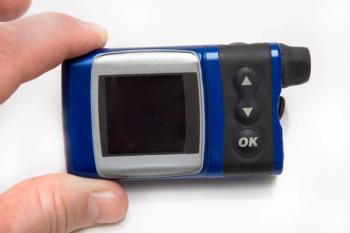
The FDA today approved Boehringer Ingelheim and Lilly's empagliflozin and linagliptin (Glyxambi) as an adjunct to diet and exercise to improve glycemic control in adults with type 2 diabetes.


The FDA today approved Boehringer Ingelheim and Lilly's empagliflozin and linagliptin (Glyxambi) as an adjunct to diet and exercise to improve glycemic control in adults with type 2 diabetes.

Women diagnosed with polycystic ovary syndrome are more likely to develop heart disease, diabetes, and other chronic conditions than those without the hormone disorder.

Drinking more than two alcoholic beverages daily in middle-age may raise your stroke risk more than traditional factors such as high blood pressure and diabetes.

Not every patient requires an aspirin a day.

The FDA announced today that it will permit the marketing of a mobile medical app that will help patients with diabetes share data from a continuous glucose monitor with other individuals.

The introduction of sodium glucose transporter 2 inhibitors has marked a turning point in the management of patients with both type 1 and type 2 diabetes.

Although metformin is a proven first-line diabetes medication, many patients with type 2 diabetes (T2D) are discouraged from taking the drug due to inappropriate FDA labeling.

The FDA today approved a device that is intended to help certain obese adults lose weight.

A new study published January 7, 2015, in the Journal of Nutrition found that magnesium levels, genes, and race affect a woman's likelihood of developing type 2 diabetes.

The Pharmacy Quality Alliance (PQA) has retired a performance measure on treating hypertension in patients with diabetes that is no longer in accordance with the Joint National Committee's (JNC8) 2014 hypertension guidelines.

Civilian women with posttraumatic stress disorder have a considerably increased risk of developing type 2 diabetes compared with counterparts unexposed to trauma.





Scientists from the Diabetes Research Centre at the University of Leicester have identified a link between low blood glucose levels and adverse cardiovascular events in patients with diabetes.

Researchers are calling for updated diabetes prevention guidelines that incorporate fetal experiences into the risk equation.

In a large, international study, pioglitazone (Actos) and rosiglitazone (Avandia) did not lead to an increased risk for bladder cancer, contradicting previous studies that suggested the opposite.

The FDA has approved the Animas Vibe insulin pump and continuous glucose monitoring system for the management of insulin-requiring diabetic adults.

Although hypertension and diabetes are often comorbid conditions, nearly one-third of hypertensive patients have not had their blood sugar tested in the last 3 years.

Dantrolene found to help prevent the destruction of insulin-producing beta cells in patients with Wolfram syndrome.

Excess medical costs for diabetes and lost productivity amounted to more than $322 billion in 2012, a 48% increase from the $218 billion estimate for 2007.


Patients with type 2 diabetes mellitus may see a reduction in blood sugar levels and body weight with empagliflozin treatment, according to data from Eli Lilly and Company and Boehringer Ingelheim Pharmaceuticals Inc.

Implementing eye screening via telemedicine among patients with diabetes uncovered that 1 in 5 have diabetic retinopathy.